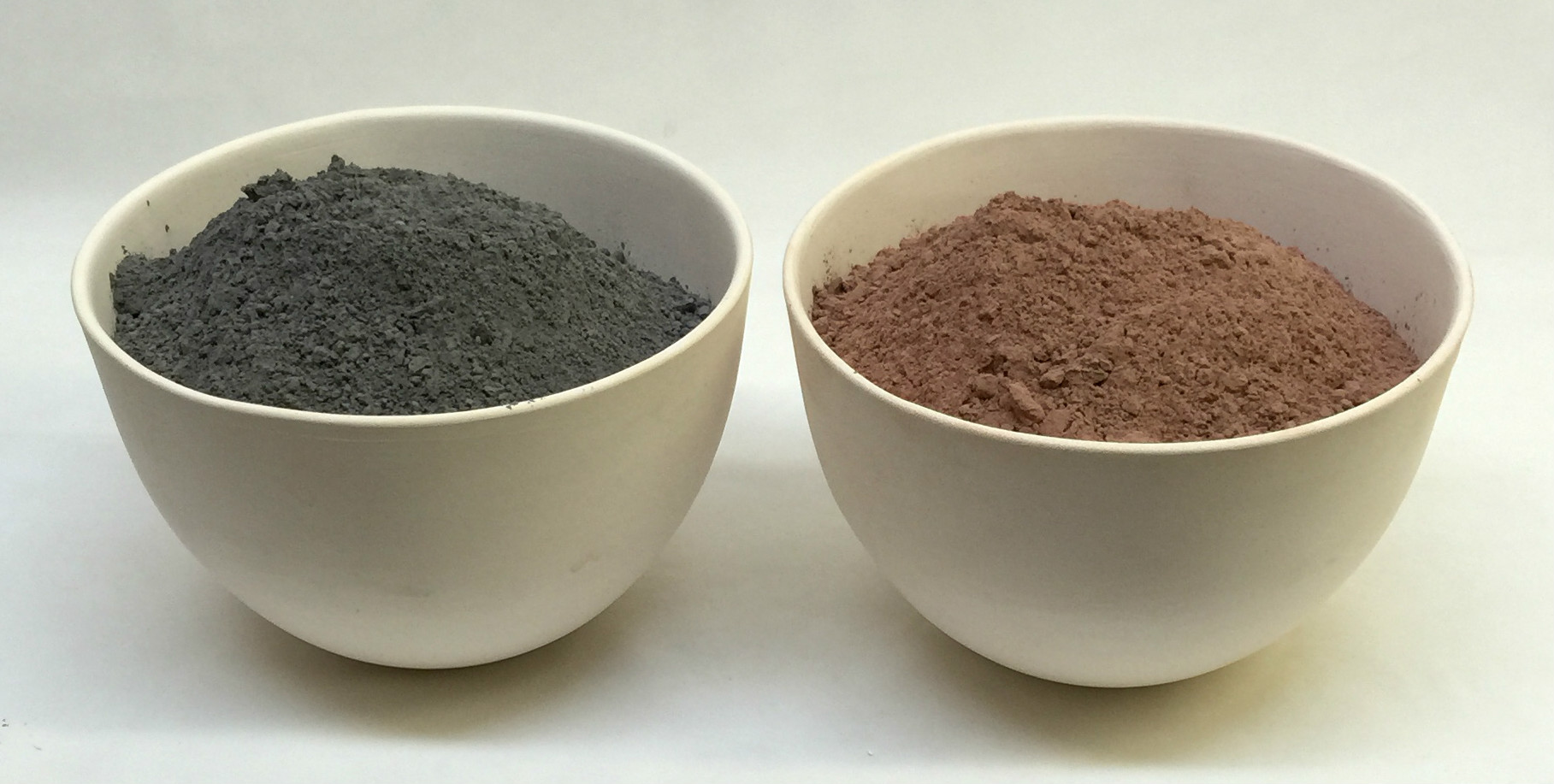Roasting Alberta and Ravenscrag Slips at 1000F: Essential for good glazes
insight-live.com/glossary/137">Roasted Alberta Slip (right) and raw powder (left). These are thin-walled 5 inch cast bowls, each holds about 1 kg. I hold the kiln at 1000F for 30 minutes. Why do this? Because Alberta Slip is a clay, it shrinks on drying (if used raw the GA6-B and similar recipes will crack as they dry and then crawl during firing). Roasting eliminates that. Calcining to 1850F sinters some particles together (creating a gritty material) while roasting to 1000F produces a smooth, fluffy powder. Technically, Alberta Slip losses 3% of its weight on roasting so I should use 3% less than a recipe calls for. But I often just swap them gram-for-gram.
Pages that reference this post in the Digitalfire Reference Library:
Alberta Slip 1900F Calcined, Ravenscrag Slip, Alberta Slip 1000F Roasted, Alberta Slip, GA10-B - Alberta Slip Tenmoku Cone 10R, GA6-B - Alberta Slip Cone 6 transparent honey glaze, GA6-C - Alberta Slip Floating Blue Cone 6, GA6-G1 - Alberta Slip Lithium Brown Cone 6 Low Expansion, GA6-AR - Alberta Slip Cone 5 Reduction Base Glaze, GA6-F - Alberta Slip Cone 6 Oatmeal, GA10x-A - Alberta Slip Base for cone 10 oxidation, GA10-A - Alberta Slip Base Cone 10R, GA6-A - Alberta Slip Cone 6 transparent honey glaze, GA6-D - Alberta Slip Glossy Brown Cone 6, L3341B - Alberta Slip Iron Crystal Cone 10R, GA6-H - Alberta Slip Cone 6 Black, GA6-G - Alberta Slip Lithium Brown Cone 6, GA10-D - Alberta Slip Black Cone 10R, GR10-E - Alberta Slip:Ravenscrag Cone 10R Celadon, Calcination

This post is one of thousands found in the Digitalfire Reference Database. Most are part of a timeline maintained by Tony Hansen. You can search that timeline on the home page of digitalfire.com.
